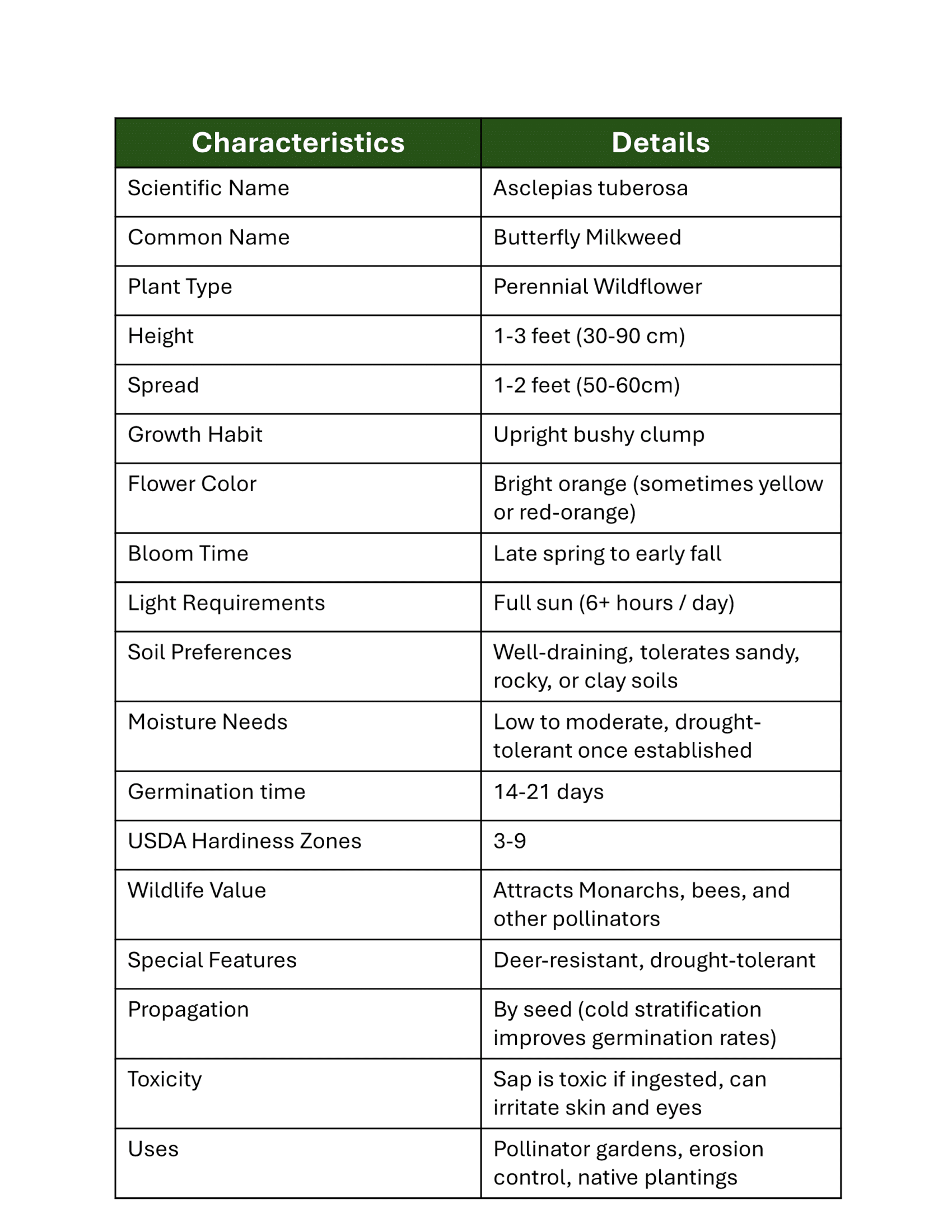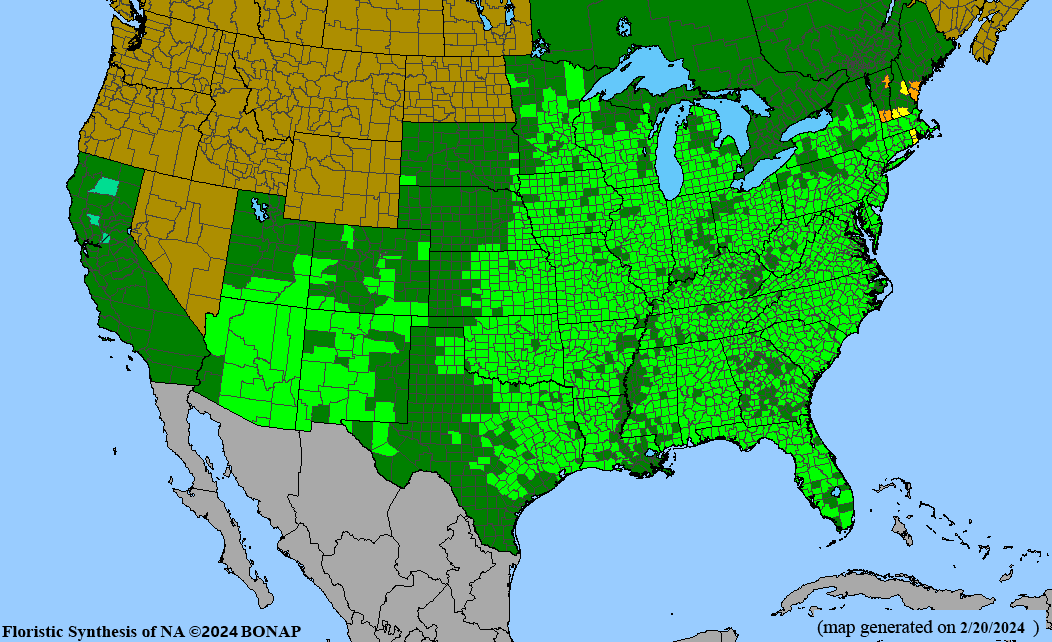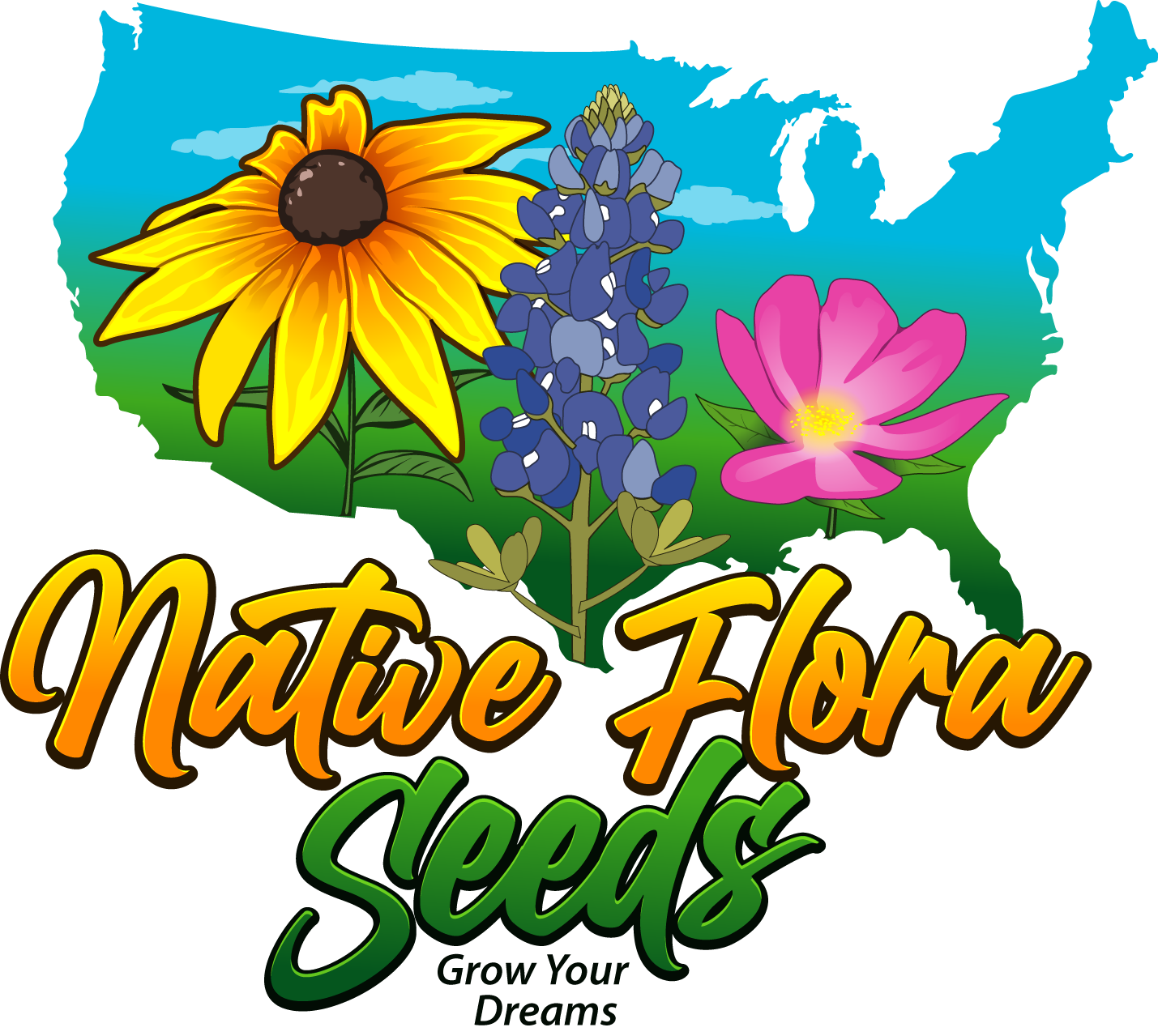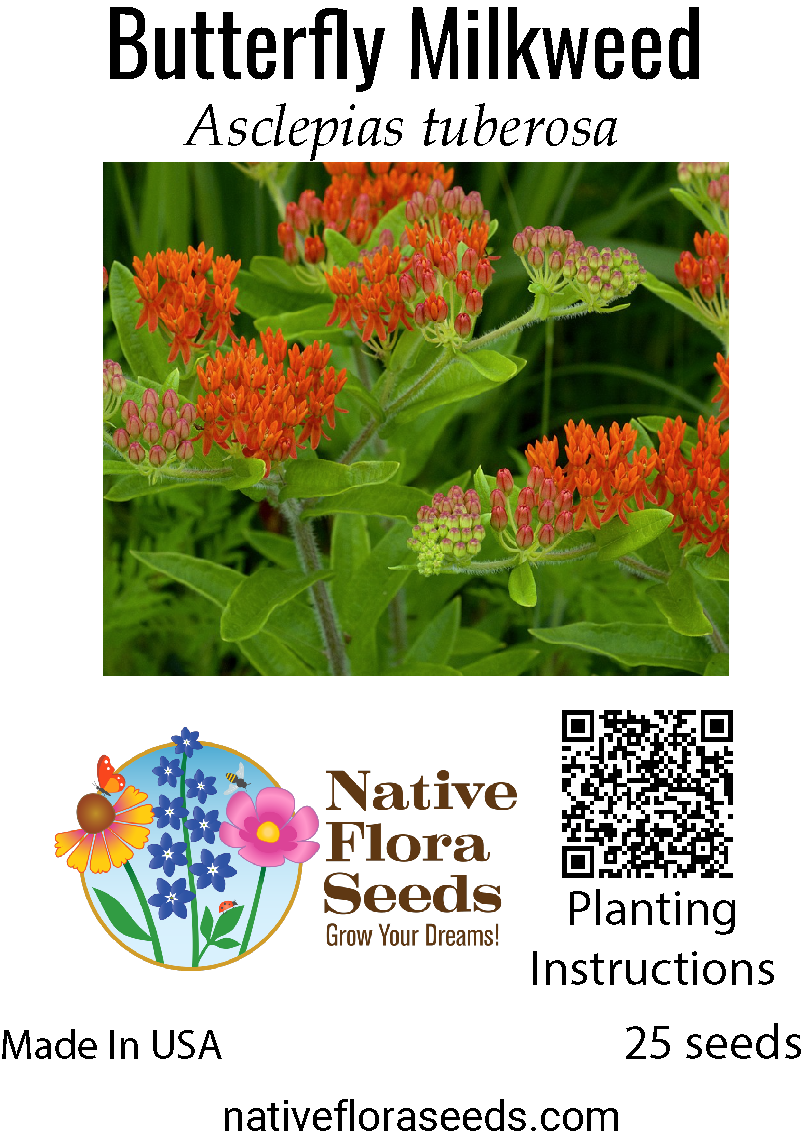Butterfly Milkweed Seeds - Native Orange Wildflower for Monarch Gardens
Regular price$4.00
/
Tax included.
Essential for Monarch Butterfly Conservation
Asclepias tuberosa is the crown jewel of pollinator gardens, producing brilliant orange flower clusters that serve as a vital nectar source and host plant for monarch butterflies. This stunning native perennial is absolutely essential for anyone serious about supporting monarch migration and creating a thriving butterfly habitat.
Why Butterfly Milkweed is a Must-Have
- Monarch Magnet: The only plant monarch caterpillars can eat - critical for their survival
- Spectacular Blooms: Vibrant orange flowers bloom for months, attracting countless butterflies
- Drought Champion: Deep taproot makes it incredibly drought tolerant once established
- Long-Lived Perennial: Returns stronger each year for decades of butterfly support
- Native Excellence: Perfectly adapted to North American conditions
Growing Details
Height: 1-3 feet | Bloom Time: Mid-summer through fall | Native to prairies and open woodlands across North America
Perfect for butterfly gardens, prairie restorations, pollinator habitats, and xeriscaping. This conservation-critical plant establishes slowly but becomes a cornerstone of any wildlife-friendly landscape. Every garden needs this monarch lifeline!





